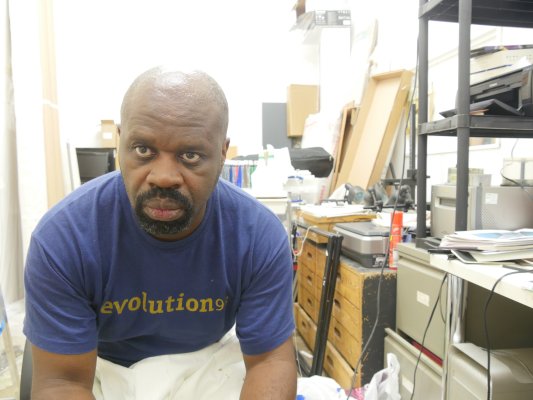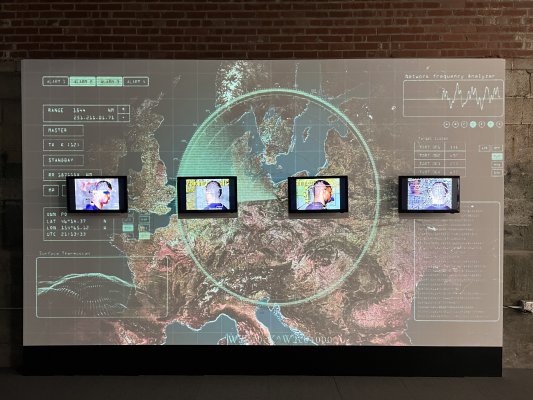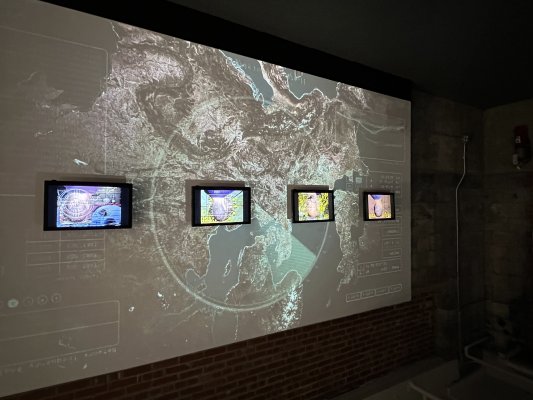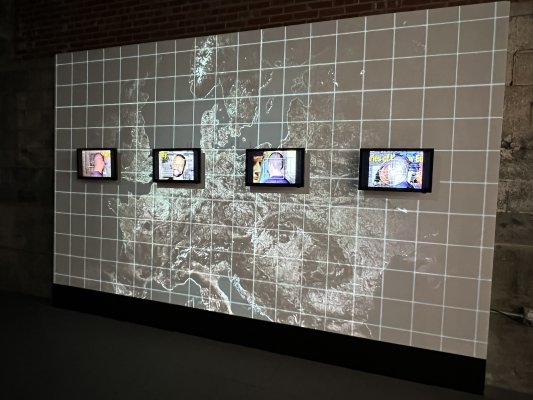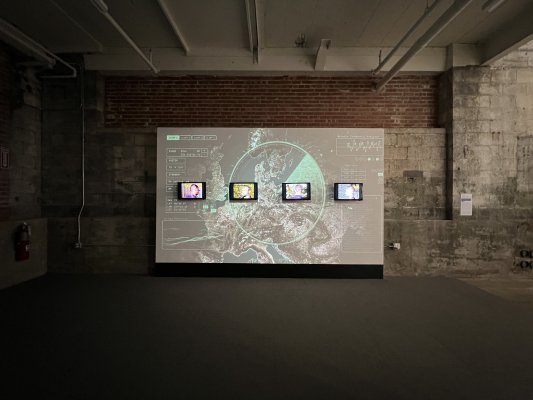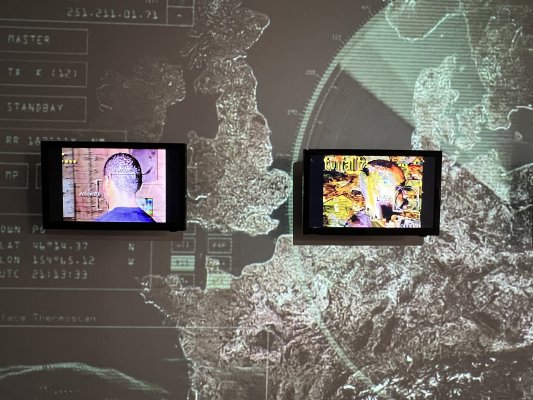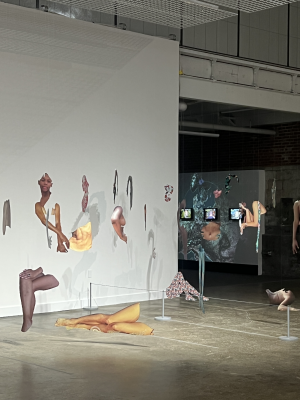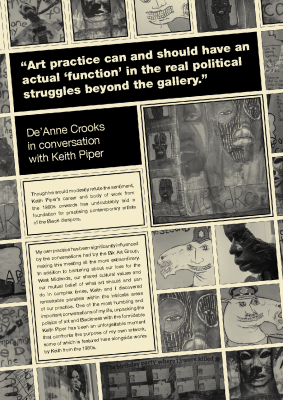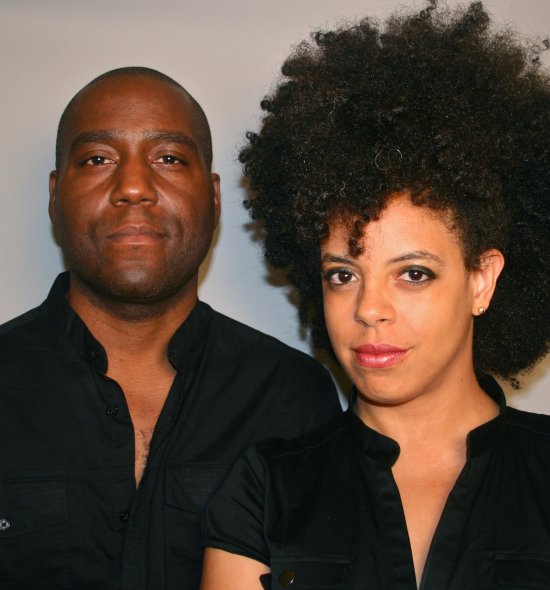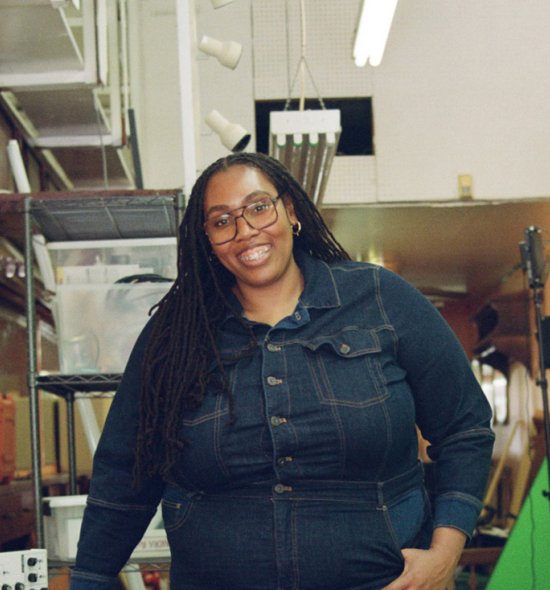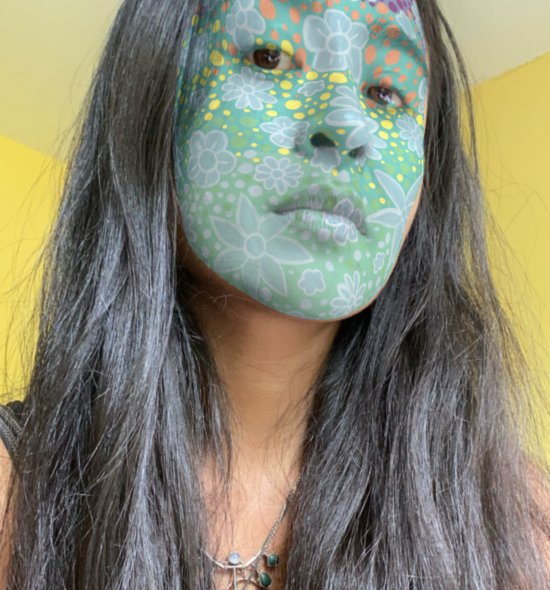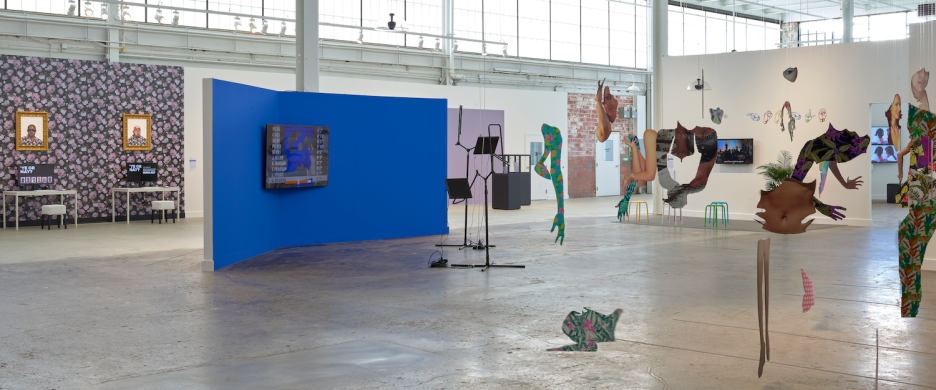Surveillance: Tagging the Other, 1992
Five digital videos (color, sound) displayed on four monitors and one projector; one digital audio file on speaker
Running time: 12 minutes, 3 seconds, looped
Courtesy of the artist
“At that time in the UK, there was a very intense conversation about what would constitute the new European subject, and whether the various Black populations in Europe would be included or excluded from that project. Now, in this moment of Brexit, all of those arguments have unraveled in a very disturbing way. And so it’s interesting to re-engage with this work at this time.”
—Keith Piper
Surveillance: Tagging the Other highlights technology’s increasing role in the surveillance of bodies, and particularly the bodies of Black people, who have been “tagged” as “other” and whose movements have been tracked and restricted since the emergence of chattel slavery. Four television screens show a Black man’s head slowly rotating for the camera while a target continuously follows his face, anticipating today’s facial recognition systems. Behind him are matrices of digital numbers, video clips of different faces, and close-ups of maps and newspapers, tying contemporary communications media to earlier systems for scrutinizing bodies and policing borders. The screens are united by the projection of a digital map and a soundtrack that includes snippets from news stories about data protection, civil rights, immigration, and hate crimes, all interspersed with the sound of wailing sirens and a relentless synth beat. The cumulative effect is a dystopian picture of a very near future in which our visible differences are tracked by global surveillance systems, transforming human subjects into objects to be measured.
In the late 1970s and 1980s, Keith Piper (he/him/his) was a key member of The BLK Art Group—an association of young Black artists of Caribbean descent living in the industrial area around Birmingham—and the British Black arts movement that it spawned. In his early works, Piper used media technologies like photocopiers and slide projectors to appropriate images and texts. He began using digital technologies in the late 1980s, producing videos, media installations, and CD-ROMs that explore topics such as the history of slavery, the myth of scientific progress, and our cultural fixation with Black athletes.
